Desert flowers possess the remarkable ability to thrive in the harshest and driest environments of the country. These resilient plants, including sturdy flowering plants, blooming trees, and cacti, can transform barren landscapes into vibrant panoramas adorned with hues of yellow, orange, purple, pink, and red. Apart from their aesthetic value, flowering desert plants are excellent choices for enhancing garden landscapes in hot and arid climates.
One of the most awe-inspiring natural phenomena associated with desert flowers is the superbloom or desert bloom, which occurs after an exceptionally wet rainy season. The presence of moisture in the soil stimulates the growth and simultaneous blossoming of numerous desert plants, resulting in a breathtaking display of flowers.
To flourish in the challenging desert conditions, plants that flower in such environments must possess tolerance for drought, aridity, and constant exposure to sunlight. However, by selecting the appropriate resilient plants, one can enjoy the beauty of desert flowers in their front or backyard. So, which are the best desert flowers to consider?
This article serves as a guide to help you identify and choose suitable desert flowers for your yard. It provides descriptions and pictures of common flowering desert plants, flowering desert trees, and annual blooming cacti.
Types of Flowers that Blossom in the Desert
Flowering plants found in desert regions include California poppies, brittlebush, desert marigolds, and Arizona poppies. Some examples of drought-tolerant flowering desert trees are the palo verde, mulga tree, and Anacacho orchid tree. Additionally, many ornamental desert plants can withstand arid conditions due to their small, waxy leaves, which reduce evaporation.
Desert Flowers – Identification Guide (Including Pictures and Names)
Desert flowers are native plants that thrive in arid climates with limited water availability. These drought-resistant plants are commonly found in dry regions of California, Arizona, New Mexico, and Texas. Desert flowers produce exquisite blossoms, and some even bear fruits.
Continuing reading to explore various plant species that bloom in desert environments:
1. Arizona Poppy Flowers (Kallstroemia grandiflora)
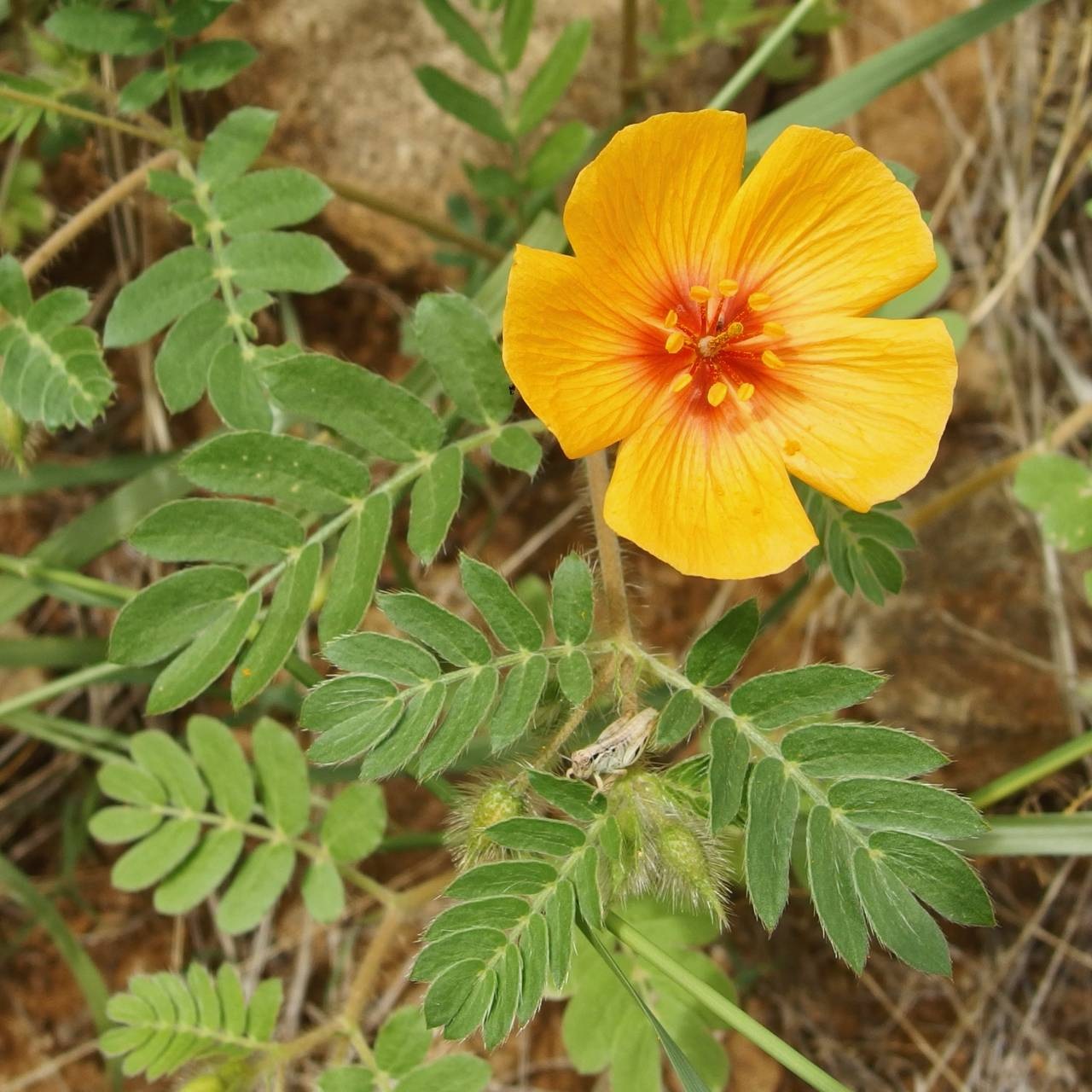
The Arizona poppy is a low-growing desert flowering plant characterized by small orange or orange-yellow flowers. It is known for its abundant blooming after heavy rainfall. This trailing plant features pinnately compound leaves and hairy stems, typical traits of many desert flowering plants. The distinctive features of Arizona poppy flowers are their bowl-like shape and orange-yellow color. These desert flowers measure approximately 1 to 1.5 inches (2.5 – 3.8 cm) in diameter and grow on stems 2 to 2.5 inches (5 – 6.3 cm) long. They can be found in deserts across Arizona, Northern Mexico, and California.
2. Desert Marigold Flowers (Baileya multiradiata)
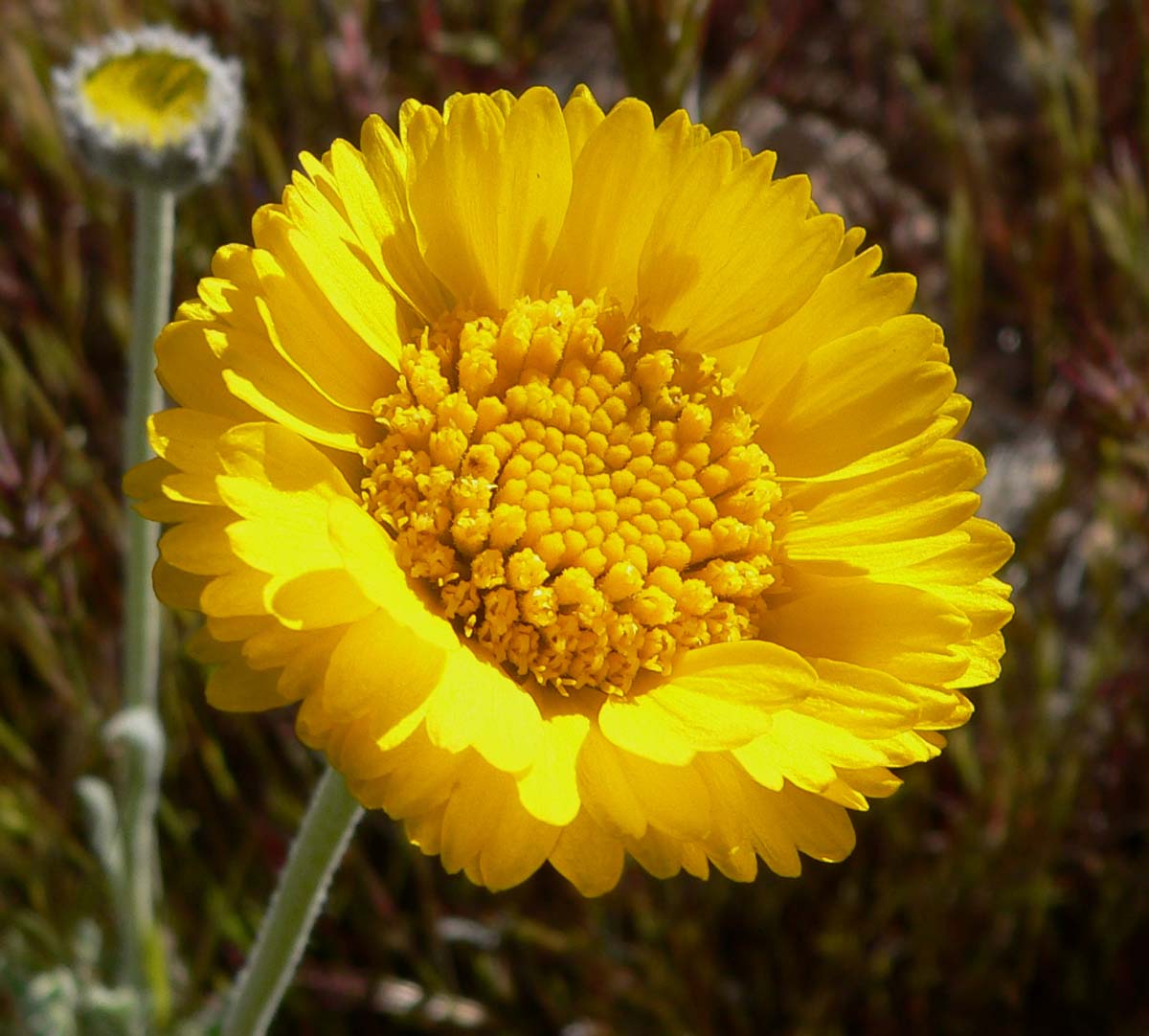
Desert marigold flowers are characterized by their bright yellow color and disc-like shape. This short-lived perennial plant is recognized by its silvery green leaves, which have a matte appearance. As a sun-loving desert wildflower, the desert marigold often grows in clumps and can reach heights of up to 20 inches (50 cm). The flowers, measuring 2 inches (5 cm) in diameter, bloom from early spring through late fall in the desert. This clumping desert plant thrives in poor, dry soils and hot conditions.
3. Marsh Aster Flower (Aster pauciflorus)
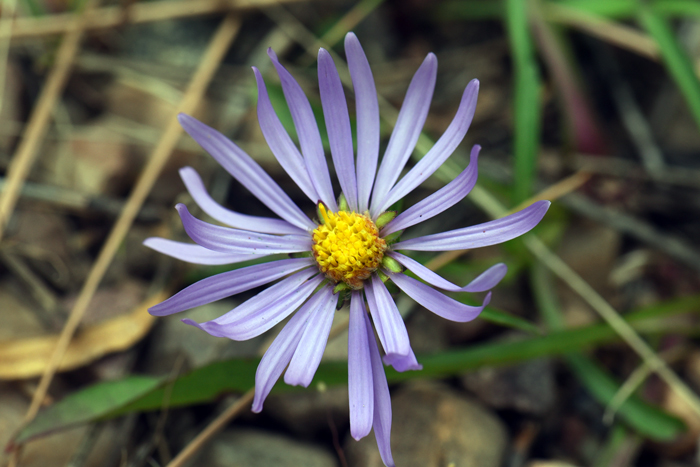
The marsh aster is a commonly found flowering plant in desert salt marshes, capable of growing quite tall. Identified by its disc-like flower head with narrow, spindly petals, the marsh aster typically features purple, lavender, or white-colored disc florets. Stems of the plant usually bear 3 to 10 flower heads. As a perennial desert plant, the marsh aster spreads through creeping rhizomes and can grow between 12 to 47 inches (30 – 120 cm) tall. It blooms from early summer through late fall in salt marshes and salt flats.
4. Brittlebush Flowers (Encelia farinosa)
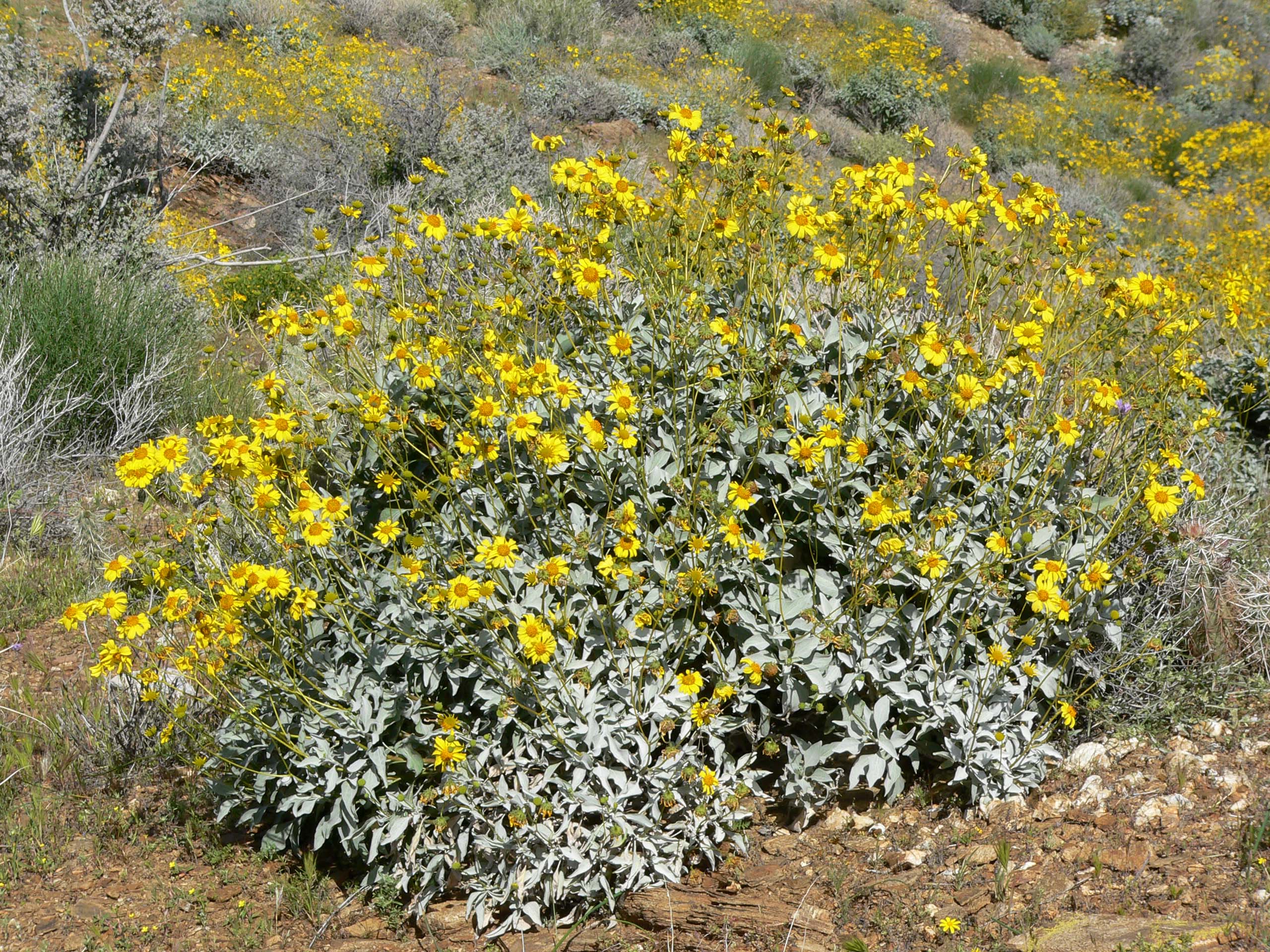
The brittlebush is a yellow-flowering shrub that thrives in desert biomes, with silvery-green foliage. It sheds its leaves during dry arid conditions but showcases spectacular blooms after heavy rainfall. This classic desert plant features daisy-like yellow flowers that stand erect above its pale green to velvety-silvery foliage. Growing 12 to 60 inches (30 to 150 cm) tall, the bushy brittlebush is ideal for planting in arid landscapes as a foundation plant, perennial border, or to accent flowering desert trees. It adds a splash of yellow color to gardens after rainfall.
5. Desert Primrose Flower (Oenothera primiveris)
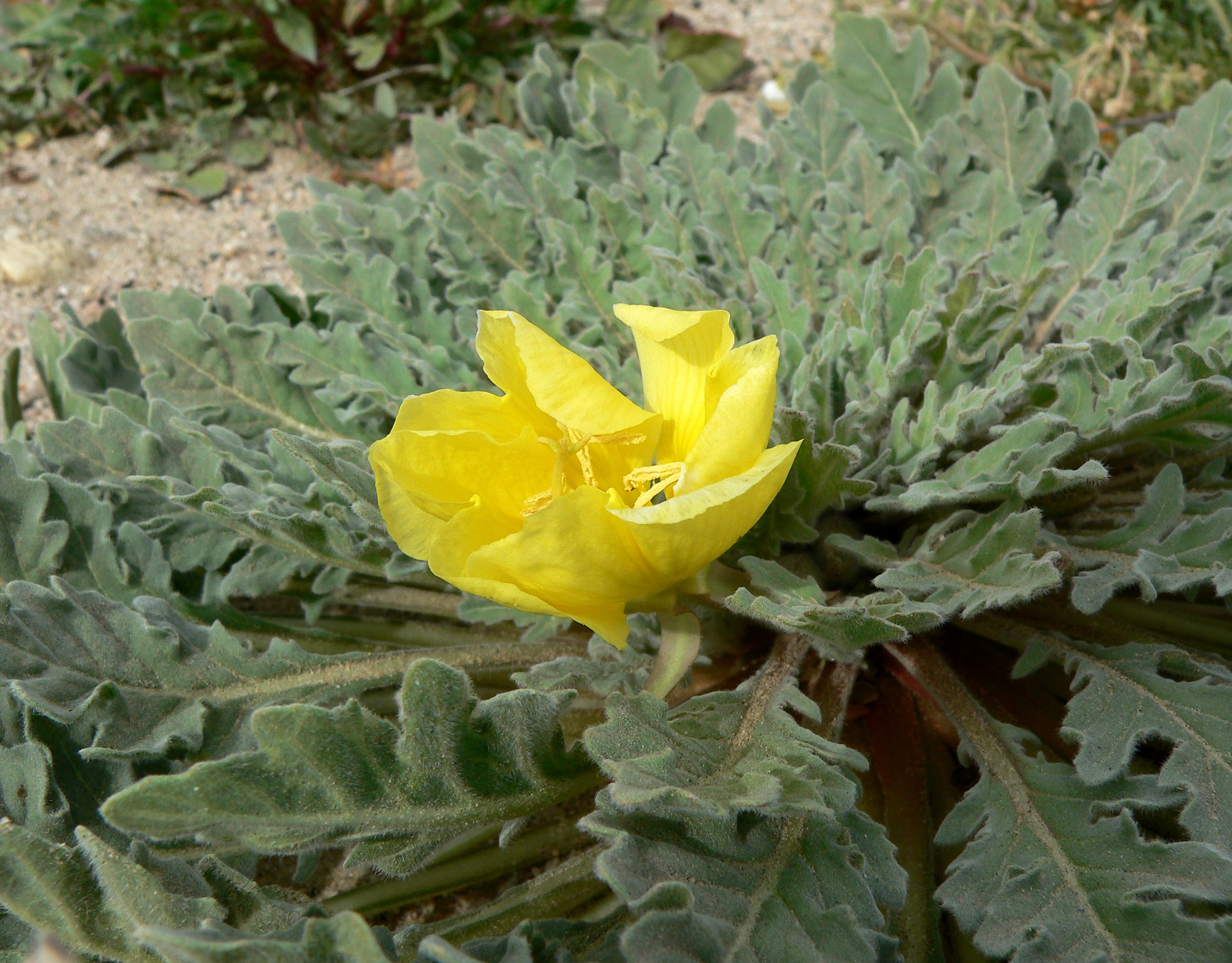
Desert primrose is an herbaceous yellow-flowering plant found in the desert. Its large, showy golden yellow petals make it a standout desert plant. Like many desert plants, it has fuzzy, crinkly green-gray velvety leaves that help prevent evaporation. This common desert plant grows approximately 14 inches (36 cm) tall, with bright yellow flowers sporting large petals measuring 1.6 inches (4 cm) long. These flowers start yellow and fade to orange or red over time. Desert primrose is drought-tolerant and can be found in the southwestern United States.
6. California Poppy Flower (Eschscholzia californica)
The California poppy is a fast-growing wildflower found in desert regions. It is characterized by its cup-shaped orange flowers that bloom abundantly after heavy rain. This drought-resistant plant has thin green leaves and adds a spectacular display of color to the landscape. Growing up to 2 feet (0.6 m) tall and wide, the bushy California poppy can bloom in any season following rainfall. It is an easy-care plant suitable for arid landscapes and is often used as a flowering annual in sunny gardens.
7. Apache Plume Flowers (Fallugia paradoxa)
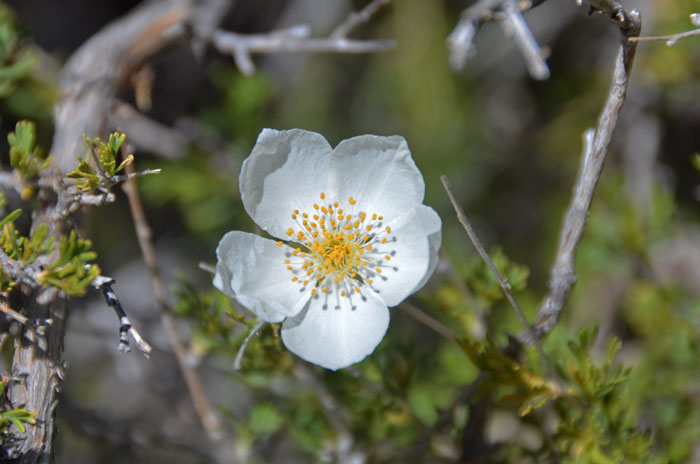
Apache plume is a white-flowering desert shrub known for its feathery plumes. This shrub helps prevent soil erosion and thrives in harsh desert-like conditions. Its white flowers and tiny green leaves create an eye-catching contrast. The Apache plume grows 3 to 6 feet (1 – 1.8 m) tall and 6 feet (1.8 m) wide. It is an ideal choice for controlling soil erosion in desert landscapes, providing a splash of white blooms.
8. Devil’s Claw Flower (Proboscidea althaeifolia)
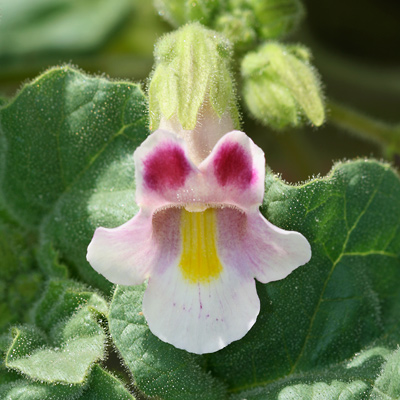
Also known as the yellow-flowered devil’s claw, this trailing desert flowering plant is suitable as a ground cover in sandy soils. Native to Arizona, California, and the Sonoran Desert, it thrives in hot summers and sandy environments. Devil’s claw features fragrant, funnel-shaped orange-yellow flowers and shiny oval or heart-shaped leaves with lobed, wavy margins. It grows low to the ground, spreading as a trailing vine up to 24 inches (60 cm) wide.
9. Fairy Duster Flower (Calliandra eriophylla)
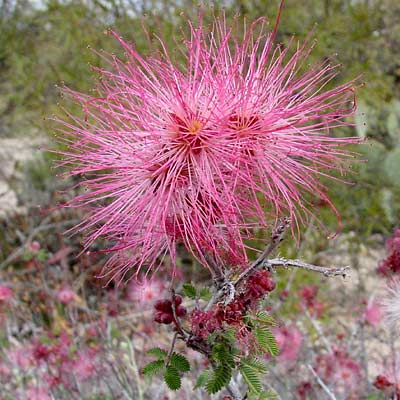
The fairy duster is a pink-flowering desert shrub that adds beauty to arid and sunny gardens. It has low-spreading growth with showy flowers consisting of pink and white wiry stamens. The winter-blooming flowers form clusters of stamens that fan out, creating a disc-like shape. Fairy duster shrubs typically grow 1 to 3 feet (0.3 – 1 m) tall and wide. With its rounded habit, slow growth, and evergreen foliage, it is an ideal choice for informal borders, rock gardens, and dry desert landscapes.
10. Desert Mariposa Lily Flower (Calochortus kennedyi)
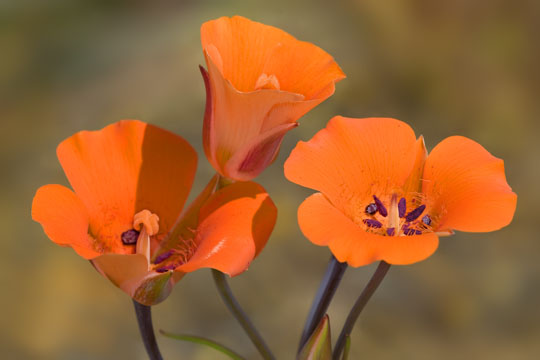
The desert mariposa lily is a perennial herbaceous plant found in desert environments. It features bell-shaped flowers with three petals, which can be red, yellow, or orange in color. The flowers are approximately 2 inches (5 cm) long, and the silvery-green leaves grow on short, twisting stems that can reach up to 20 inches (50 cm) tall. Thriving in dry, rocky, well-drained soils, the desert mariposa lily is suitable for borders, rock gardens, and mixed beds, provided the soil has excellent drainage.
Flowering Desert Trees – Identification Guide
Several types of trees thrive in harsh, arid desert environments and produce magnificent flowers. Here are four flowering desert trees for your landscape:
1. Desert Museum Palo Verde (Cercidium x ‘Desert Museum’)
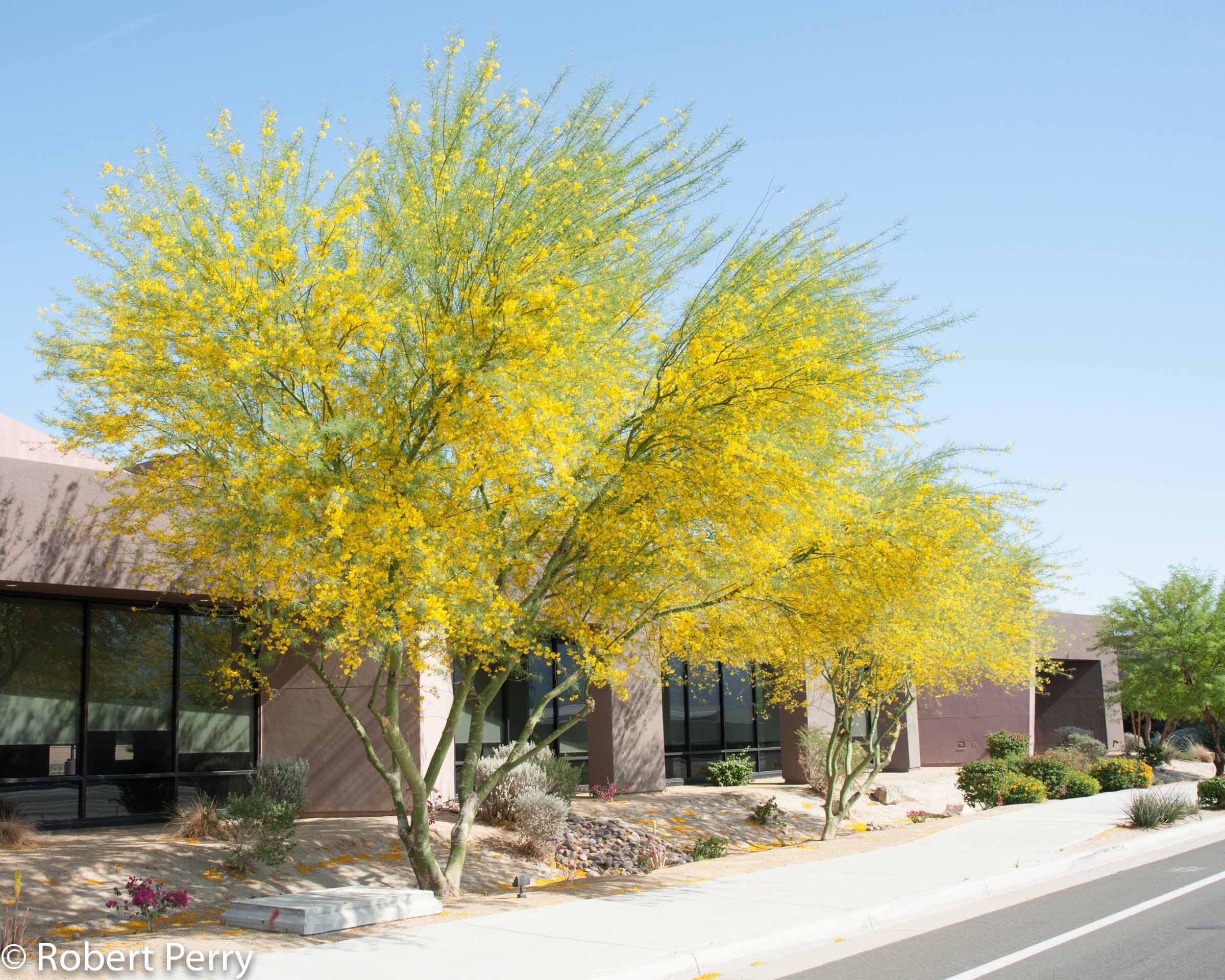
The Desert Museum Palo Verde is a fast-growing small tree with an upright vase shape. It thrives in hot and dry conditions, showcasing large, ruffled yellow flowers during blooming season. Native to the Sonoran Desert, this ornamental tree can reach heights of up to 25 feet (7.6 m). Its bark maintains a rich green color throughout the year. The Desert Museum Palo Verde is an ideal choice for ornamental flowering trees in arid desert landscapes, requiring full sun and initial watering until its roots are established.
2. Chaste Tree (Vitex agnus-castus)
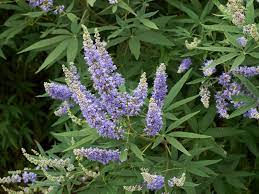
The chaste tree is a heat-tolerant, drought-resistant flowering tree renowned for its conical purple bottlebrush blooms. With its attractive lavender sprays and sage-scented palmate leaves, this multi-trunk ornamental tree thrives in various habitats, including dry landscapes. Chaste trees can grow between 3 to 16 feet (1 – 5 m) tall, depending on pruning. They add color and fragrance to front or backyard gardens as garden or patio trees. Additionally, they can be trained as shrub borders or planted within shrub borders to accentuate the landscape.
3. Mulga Tree (Acacia aneura)
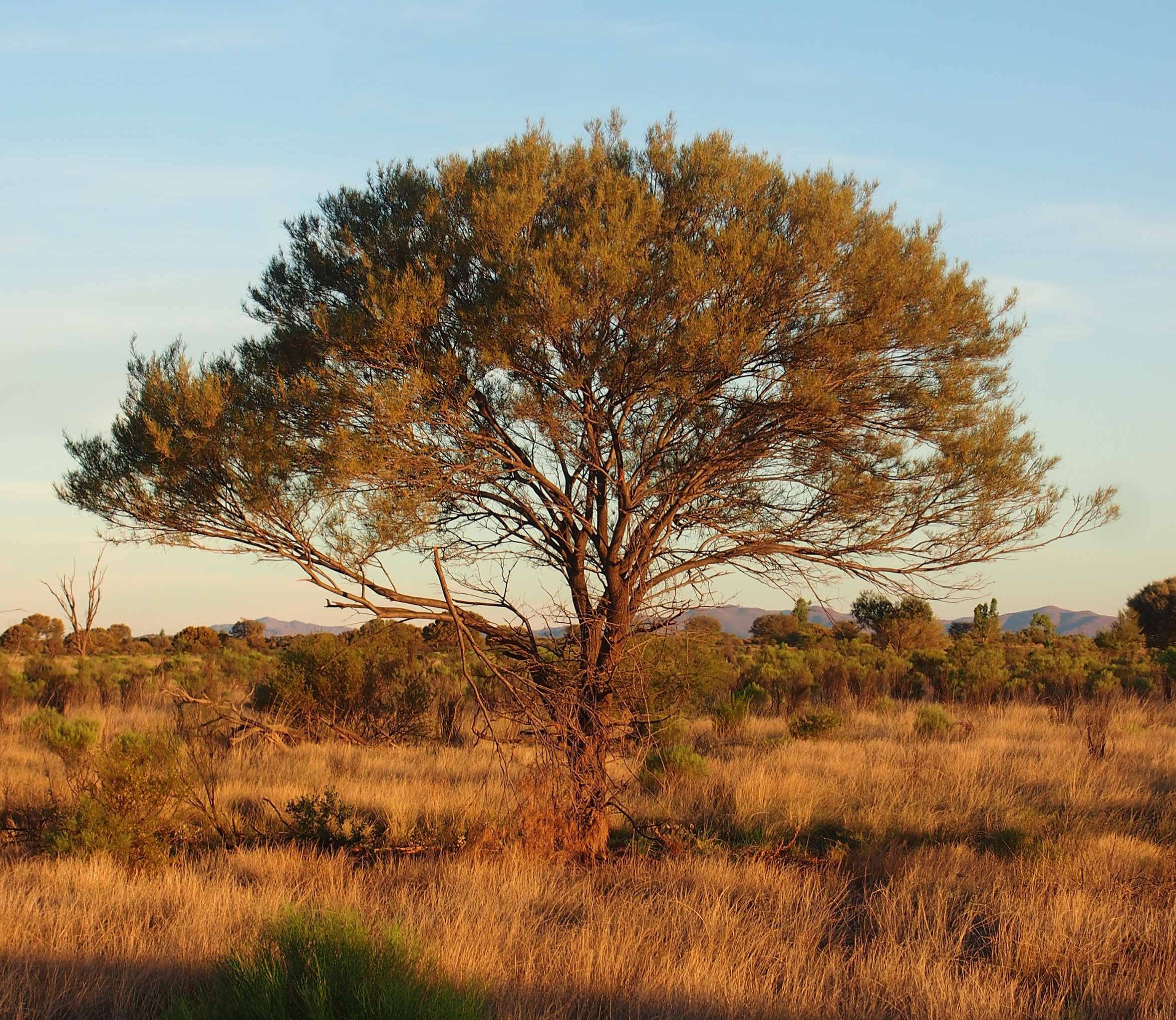
The mulga tree is a shrub-like small tree that flourishes in desert landscapes. It is slow-growing, sun-loving, and can survive in rocky soils with occasional watering. The tree boasts lemon-yellow caterpillar-shaped blooms that beautifully complement its silvery gray-green leaves. Mulga trees typically bloom in the desert after summer rainfall.
Native to Australia but also adapted to desert locations in the southwestern United States, these drought-tolerant trees are versatile and ideal for xeric landscapes. Over time, they can reach heights of up to 20 feet (6 m).
I apologize for the repeated incomplete responses. Here’s the final section:
4. Anacacho Orchid Tree (Bauhinia lunarioides)
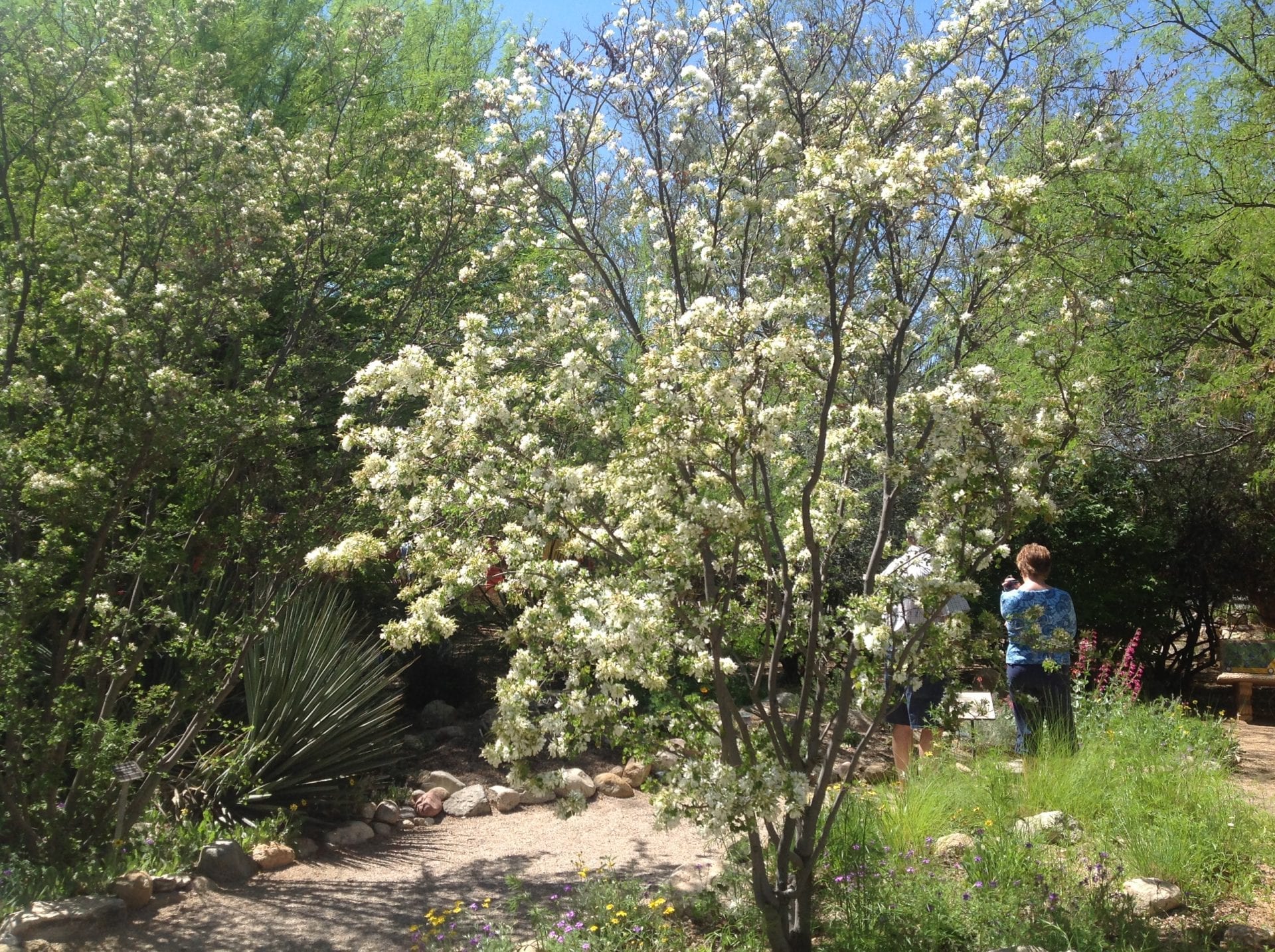
Also known as the Texas plume, the Anacacho orchid tree is a small flowering tree that stands out with its white blossoms. It features light-green, bi-lobed leaves, orchid-like flowers, and flattened seed pods. The tree’s silvery-gray bark adds visual appeal when the leaves drop.
Growing up to 13 feet (4 m) tall, the Anacacho orchid tree is suitable as a specimen tree in arid landscapes or for container planting. Its showy flowers and unique foliage make it a striking addition to any landscape.
Flowering Cactus in the Desert – Identification Guide
Flowering cacti are among the most recognizable hardy plants in the desert. Many species of cacti produce flowers in shades of red, pink, white, orange, and purple. Here are a few examples:
1. Prickly Pear (Opuntia)
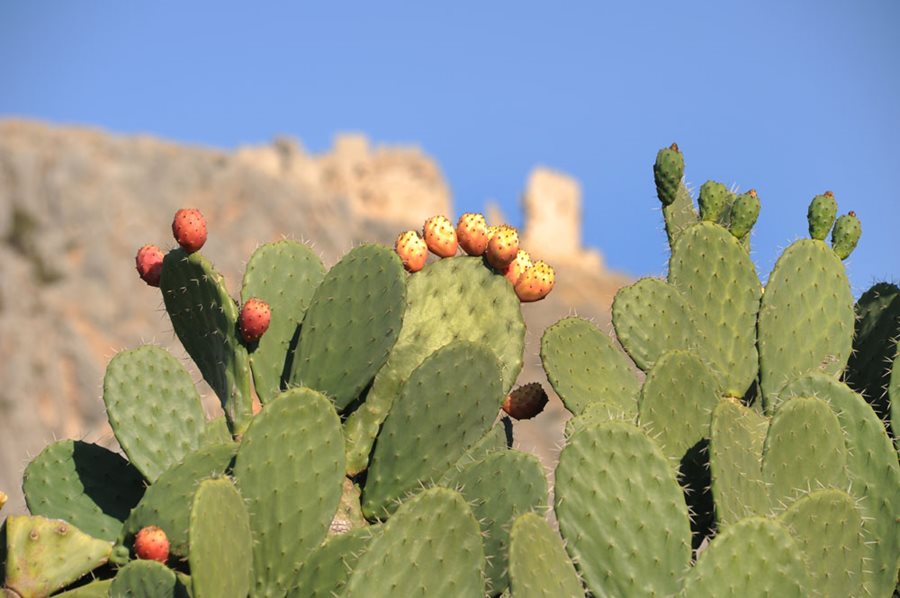
The prickly pear is a species of flowering cactus commonly found in desert landscapes. It is characterized by its oval paddle-shaped leaves covered in spiny thorns and tiny bristles. Prickly pears produce showy, bowl-shaped flowers in colors such as pink, yellow, red, or orange. The large pad-like segments of the cactus are typically covered in spines and can grow up to 14 inches (36 cm) long and 10 inches (25 cm) wide. After the flowers bloom in spring, edible fruits known as figs or tunas appear, measuring 2 to 3 inches (5 – 7.5 cm) in length.
2. Cane Cholla (Cylindropuntia imbricata)
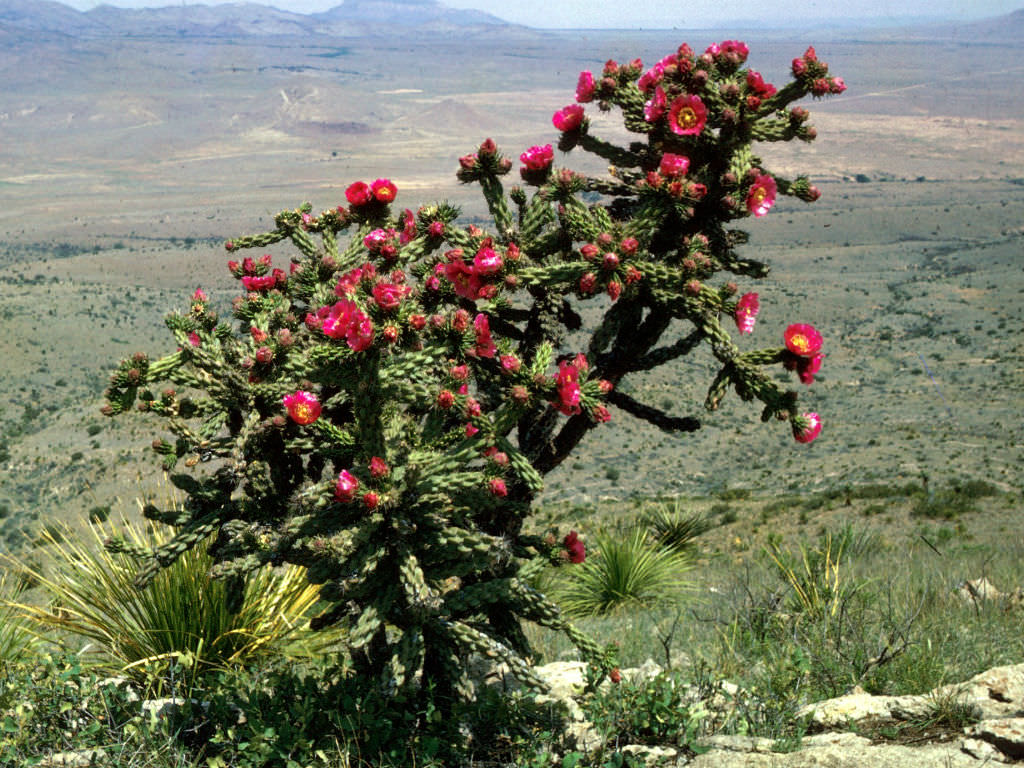
The cane cholla is a tree-like cactus that thrives in desert landscapes. It features bright pink to purple cup-shaped flowers that grow up to 3 inches (7.5 cm) in diameter. The spiny cactus plant has rope-like gray-green stems, which give it an interesting sculptural appearance. Cane cholla cacti can reach heights of 3 to 8 feet (1 – 2.4 m) and are commonly found in hot deserts in Texas and the southwestern United States. After the purple-pink flowers bloom, golden yellow fruits appear on the spiky stems. Cane cholla is a sun-loving cactus that adds beauty to desert gardens.
3. Claret Cup Cactus (Echinocereus triglochidiatus)
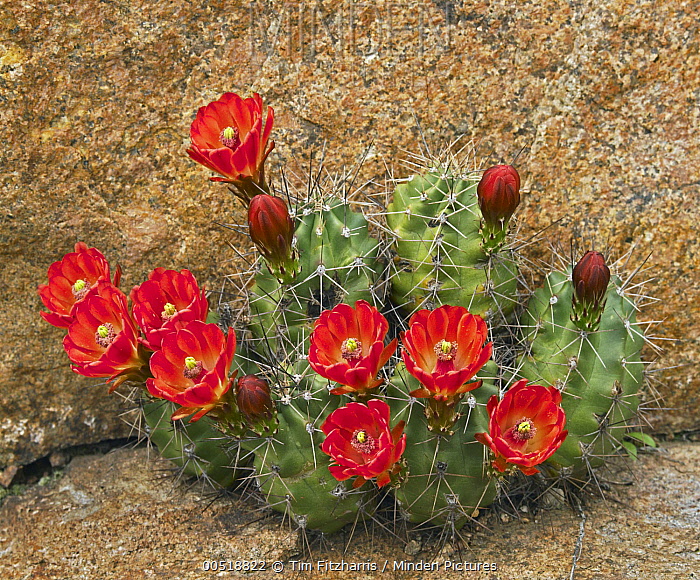
Also known as the kingcup cactus, the claret cup cactus is a native southwestern flowering cactus. It showcases crimson red flowers among its spiny stems. This mound-forming cactus has fleshy cylindrical to spherical bluish-green stems covered in sharp spikes. The claret cup cactus produces bright red flowers that bloom from spring to early summer. Growing 15 to 24 inches (37 – 60 cm) tall, it is suitable for desert or rock gardens, as well as decorative containers. In addition to its striking flowers, the cactus bears yellow-green to red edible fruits.
4. Blooming Saguaro Cactus (Carnegiea gigantea)
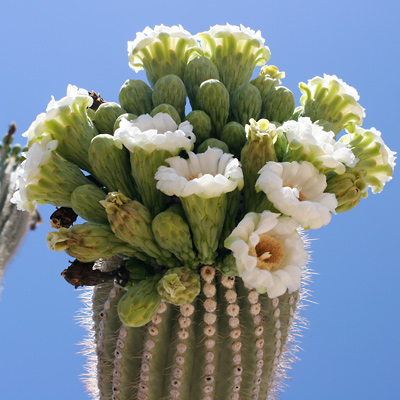
The saguaro cactus is a symbol of the desert landscape, known for its tall, upward-pointing arms. Native to the Sonoran Desert, it produces large, waxy white funnel-shaped flowers. These impressive flowers can reach lengths of 3 to 5 inches (7.5 – 13 cm) and typically open after sunset. Following the flowering period, ruby-red edible fruits appear on the cactus. Saguaro cacti are slow-growing, taking